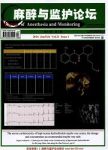An In Vivo Evaluation of the Mycobacterial Filtration Efficacy of Three Breathing Filters Used in Anesthesia
An In Vivo Evaluation of the Mycobacterial Filtration Efficacy of Three Breathing Filters Used in Anesthesia作者机构:Resident Department of Anesthesiology Laval University. Current position:Assistant Professor of Anesthesiology andMedicine University of Utah Salt Lake City Utah Associate Clinical Professor Associate Clinical Professor and Chairman Department of Anesthesiology Assistant Clinical Professor Associate Clinical Professor Department of Medicine (Microbiology) Laval University Professor Department of Surgery Laval University Quebec Canada
出 版 物:《麻醉与监护论坛》 (Forum of Anesthesia and Monitoring)
年 卷 期:2011年第18卷第3期
页 面:215-221页
学科分类:1205[管理学-图书情报与档案管理] 12[管理学] 120501[管理学-图书馆学] 120502[管理学-情报学]
摘 要:Background:The use of breathing filters (BFs) has been recommended to protect the anesthesia apparatus in proven or suspected cases of tuberculosis. Some investigators have also suggested the use of BF to alleviate the need to change anesthesia breathing circuits after each case. This study evaluated the filtration efficacy of three different BFs to prevent mycobacterial contamination of breathing circuits in a model that uses a test animal. Methods:Ten Pall BB25A (pleated hydrophobic) (Pall Canada Ltd., Mississauga, Ontario, Canada), six DAR Barrierbac S (felted electrostatic; Mallinckrodt DAR, Mirandola, Italy), and six Baxter Airlife (felted electrostatic; Baxter Canada, Mississauga, Ontario, Canada) BFs were studied. For each BF tested, 20 ml of a high concentration suspension of Mycobacterium chelonae (range, 2.0×10^7 to 9.0×10^7 colony-forming units/ml) was nebulized during 2h at the proximal end of the endotracheal tube of anesthetized pigs. At the end of the nebulization period, the BFs were sampled for culture. The titer reduction value (number of microorganisms challenging the BF divided by the number of microorganisms recovered downstream of the BF) and the removal efficiency (difference between the number of microorganisms challenging the BF and the number of microorganisms recovered downstream of the BF, divided by the number of microorganisms challenging the BF) were calculated. Results:The median titer reduction values were 5.6×10^5, 6.0×10^5, and 8.0×10^8 (P 0.0005), and the median removal efficiencies were greater than 99.999%, greater than 99.999%, and 100% (P= not significant) for the DAR Barrierbac S, the Baxter Airlife, and the Pall BB25A, respectively. Conclusions:Among the three BFs studied, only the Pall BB25A completely prevented the passage of M. chelonae, thus protecting the anesthesia breathing circuit from mycobacterial contamination.



